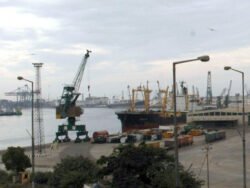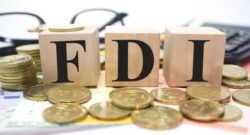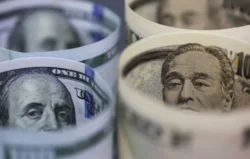PAKISTAN’S ENERGY RENAISSANCE: BOOSTING DOMESTIC PRODUCTIONAND EMERGING AS A KEY EXPORTER

Flag of Pakistan in front of a clear blue sky
07 June 2024
Maria Mansab
In recent times, Pakistan has undergone a remarkable transition from a traditional
net importer of fuel oil to becoming an exporter. This transformation stems from the
country’s concerted efforts to explore its existing fuel wells and embrace alternative
energy sources, such as gas and coal, for power generation. By harnessing its
domestic resources and diversifying its energy portfolio, Pakistan is forging a path
toward greater energy independence and economic resilience in the face of global energy
fluctuations.
In the first half of the fiscal year, Pakistan exported approximately 600,000 metric tons
of fuel oil, marking a substantial increase from the previous year. The latest data from
Enterprise Singapore further highlights Pakistan’s newfound status as an exporter.
In January, Singapore imported a substantial 45,981 metric tons of fuel oil from
Pakistan, signaling the growing recognition of Pakistan as a reliable supplier in the global
energy market.
As per Pakistan’s Oil Companies Advisory Council, in December 2023, Pakistan
achieved a groundbreaking surge in fuel oil exports, with a record shipment of
135,551 metric tons. This remarkable achievement represents a significant 37%
increase from the previous month’s export volume of 98,830 metric tons
The Special Investment Facilitation Council (SIFC) has been a catalyst for
Pakistan’s transformation in the energy sector by streamlining investment
processes and fostering a conducive environment for energy sector
advancements. SIFC’s facilitation extends to upgrading brownfield oil refineries, with
entities like Pakistan Refinery Limited (PRL) set to sign agreements with the Oil and Gas
Regulatory Authority (Ogra) to double their refining capacities and produce EURO-V
standard fuel. These strategic enhancements in refining capabilities promise to elevate
Pakistan’s oil sector by boosting domestic production, ensuring environmentally
compliant fuel, and reducing reliance on imports. Through such initiatives, SIFC is not
only advancing Pakistan’s energy independence and economic resilience but also
positioning the nation as a formidable player in the global energy market.
Pakistan Oil and Gas Development Company Limited (OGDCL) is implementing a
comprehensive production optimization program to counteract declining output in
the oil and gas sector, which accounts for 46% of the nation’s overall oil production
and 28% of its gas production. Techniques such as electrical submersible pumps,
rigless interventions, and new perforations have already led to substantial
increases in oil, gas, and LPG production at various wells.
Through strategic rigless interventions of the Siab-1 well, OGDCL has significantly
boosted hydrocarbon production, increasing output from 125 BPD to an additional
390 Barrels Per Day (BPD) of oil and from 6.2 Million Standard Cubic Feet per Day
(MMSCFD) to 20.5 MMSCFD of gas. Similarly, at the Nim East-1 exploratory well, the
laying of a 12.5 km pipeline has resulted in an added production of 585 BPD of oil, 7.4
MMSCFD of gas, and 32 metric tons per day of LPG. Furthermore, optimization
initiatives at Nashpa Well-10, including perforation washes in multiple formations, have
raised its output to 1,870 BPD of oil and 7.02 MMSCFD of gas, along with the
recovery of 10 metric tons per day of LPG as reported by OGDCL.
To support this transformation, OGDCL is promoting indigenization by engaging
local manufacturers and reducing imports by 25%. This move fosters local industry
and enhances economic resilience by lessening dependence on imported equipment and
services. Additionally, Policy reforms and incentives introduced by the Pakistani
government have also played a vital role. Significant amendments to the petroleum
policy now allow exploration companies to sell 35% of the extracted oil and gas to
third parties. A new tight gas policy offers incentives for exploring and exploiting tight
gas deposits, encouraging investment, and enhancing domestic production.
Notably, OGDCL the country’s largest energy explorer, has ambitious plans to
significantly increase production in the coming years. OGDCL aims to boost daily crude
oil production from the current 33,000 barrels to approximately 50,000 barrels
within the next four to five years. Additionally, the company intends to raise natural
gas production from the current 720 million cubic feet per day to over 900 million
cubic feet per day.
The impact of increased oil exports on the Pakistan Stock Exchange (PSX) is
evident through notable figures. Pakistan’s stock market is projected to surpass the
80,000 level by the end of 2024, driven by comprehensive economic reforms, monetary
easing, and improved macroeconomic indicators. This optimistic forecast aligns with
the nation’s strategic initiatives to boost domestic energy production and expand
its export capacity. Key players in the energy sector, such as Pakistan Oil and Gas
Development Company Limited (OGDCL) and Pakistan Refinery Limited (PRL), have
seen significant stock price increases due to enhanced production capabilities and
favorable government policies. These factors underscore the positive ripple effects
of Pakistan’s energy renaissance on the stock exchange, solidifying the market’s
role in supporting the country’s economic transformation.
This significant shift from a net importer to an emerging exporter in the energy sector is
not just a milestone—it’s a game-changer. Through strategic initiatives, cuttingedge technology, robust policy reforms, and the instrumental role of the Special
Investment Facilitation Council (SIFC), Pakistan is securing its energy future and
marking its place on the global energy stage. This bold move promises sustainable
growth and a brighter, self-sufficient future for the nation.





